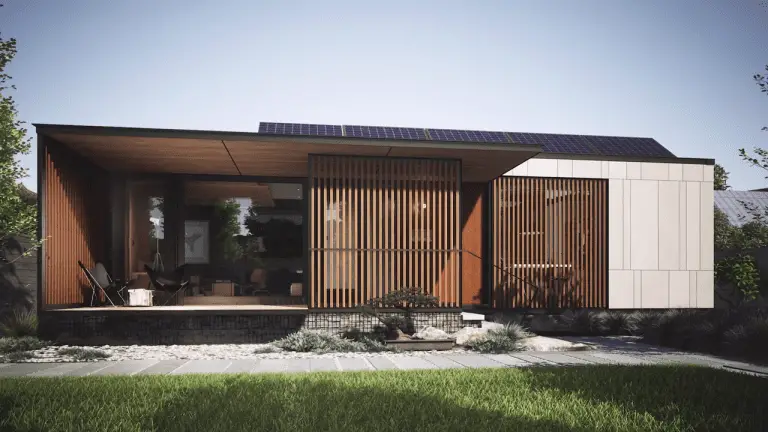21+ Aesthetic Tiny Home Design Ideas To Inspire You

Tiny homes are gaining popularity as more people seek simplicity and charm in their living spaces. The aesthetic appeal of a tiny home can transform a small area into a cozy and inviting retreat. Designing a perfect tiny home involves blending style with functionality, making the most of limited space while showcasing personal taste.

Incorporating elements like sleek lines, open spaces, and natural light can create a modern look that feels bigger than it is. Details such as textured accessories and unique lighting can add personality and warmth to minimalist designs. Small features, like a sliding barn door or under-stair cubbies, not only save space but also enhance the overall aesthetic.
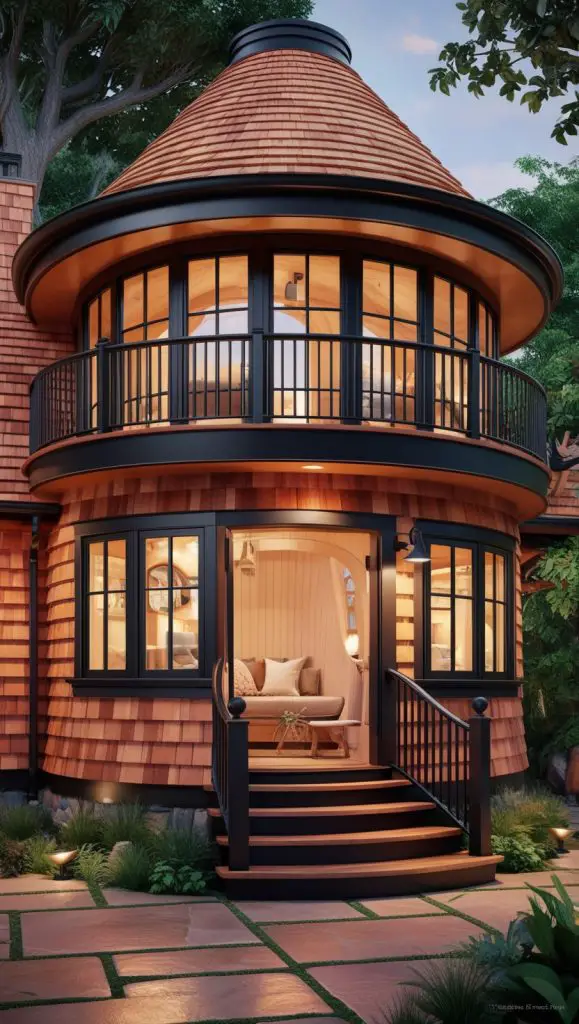
With the right approach, anyone can turn a tiny home into a stylish sanctuary that reflects their lifestyle. Finding inspiration by combining various design ideas can make the process enjoyable and fulfilling. The journey of creating a tiny home isn’t just about downsizing; it’s about crafting a space that feels like home.
Embracing Minimalism: The Allure Of Tiny Home Aesthetics


Minimalism captures attention with its clean lines and functional designs. In tiny homes, this approach shines as a way to maximize space while creating a peaceful environment.

Scandinavian style is a key inspiration for minimalism. It emphasizes simplicity, light colors, and natural materials. This design choice enhances the feeling of space and brings a cozy charm to small areas.
Here are some features of minimalistic tiny home design:
- Decluttered Spaces: Each item should have purpose. Avoid excess to create a serene atmosphere.
- Natural Light: Large windows and skylights invite sunlight, making spaces feel larger and more inviting.
- Multi-Functional Furniture: Pieces that serve more than one function help save space. Think of beds with storage underneath or tables that can fold away.
By choosing a neutral color palette with a few strategic pops of color, tiny homes can still feel lively. Textured accessories add warmth and depth without overwhelming the aesthetic.
Incorporating these elements can create a balanced, beautiful, and functional tiny home. Embracing minimalism allows for a more intentional lifestyle, focusing on what truly matters.
Tiny Home Aesthetic: Where Style Meets Simplicity

Tiny homes blend style and simplicity seamlessly. They often feature clean lines and modern design that create a calm atmosphere.
One popular choice is Scandinavian design. This style emphasizes functionality and comfort. It uses natural wood and light wood finishes to bring warmth indoors.
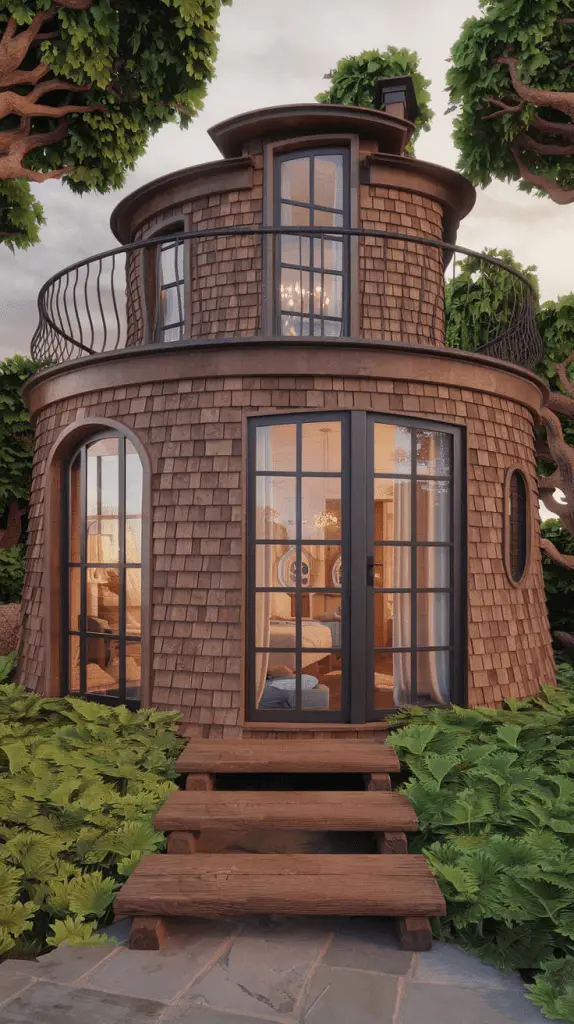
Materials play an essential role in tiny home aesthetics. Sleek surfaces paired with textured fabrics can create visual interest without overwhelming the space. Incorporating fabrics like linen or cotton can add softness and contrast against hard surfaces.
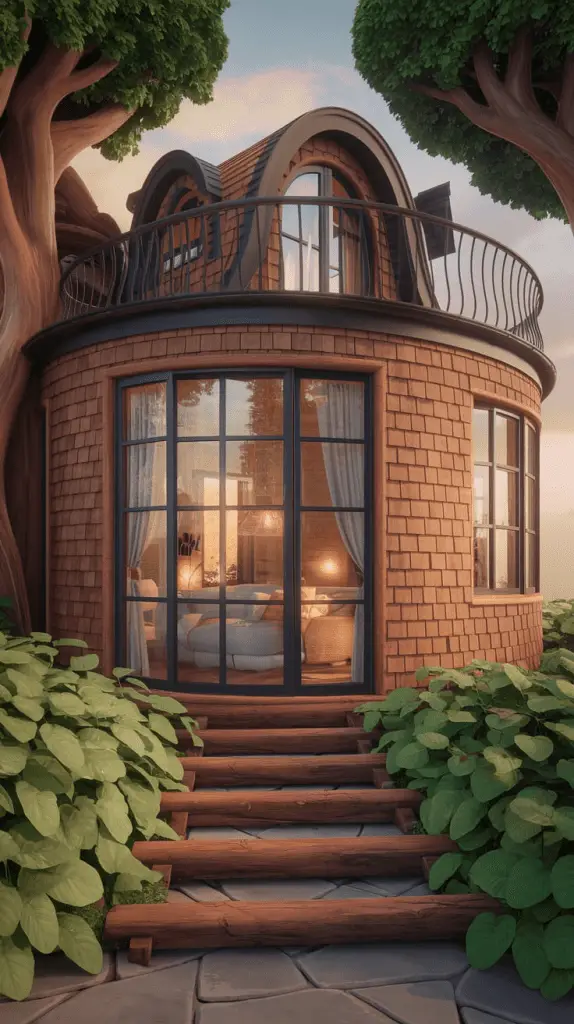
Color choices are also vital. A neutral palette allows for greater flexibility. Soft whites, grays, and beiges enhance light, making small spaces feel larger.
Furniture in tiny homes often falls into a modern style category. Multi-functional pieces, such as a fold-out table or a sofa bed, maximize usability. Opting for furniture with clean lines maintains the aesthetic without cluttering the interior.

Natural light is fundamental. Large windows or skylights invite light and open the space, making the home feel more expansive.
In summary, achieving a tiny home aesthetic requires thoughtful selections. Choosing the right materials, colors, and furniture helps create a stylish yet simple living environment perfect for modern lifestyles.
Creating Your Dream Space: The Tiny Home Aesthetic Revolution

The tiny home aesthetic focuses on intentional design. Each element in the space serves a purpose. This approach enhances both style and functionality.

People are drawn to minimalism. In tiny homes, less is often more. Thoughtful choices can create warmth without clutter.
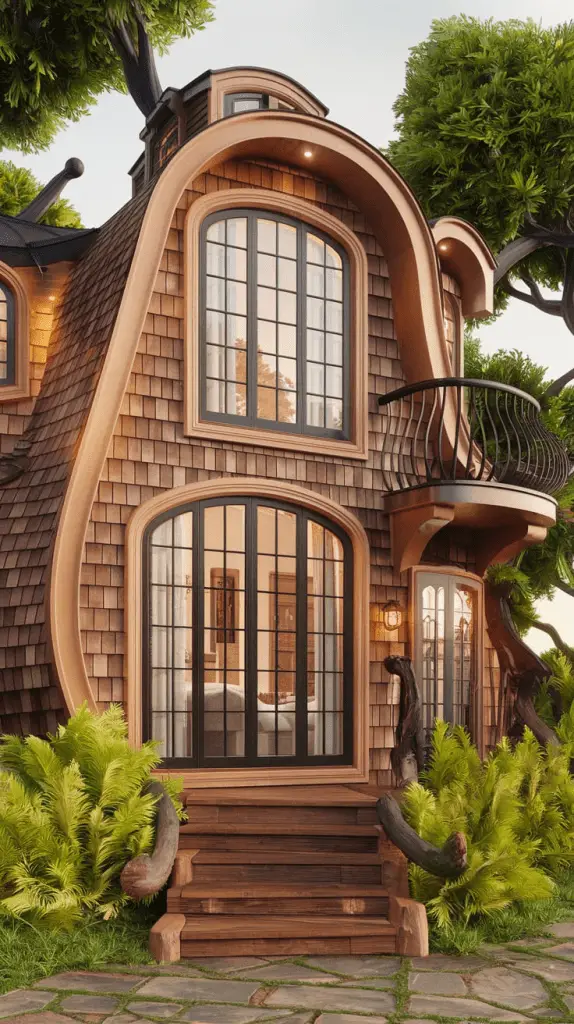
Key Elements of Tiny Home Aesthetic:
- Natural Light: Large windows brighten the space. This makes it feel open and inviting.
- Multi-Functional Furniture: Pieces that serve more than one purpose maximize space, like a sofa bed or a foldable table.
- Eco-Friendly Materials: Sustainable options like reclaimed wood fit well within the aesthetic and promote environmental care.
Professional designers often collaborate with owners to create a seamless blend of personal style and practicality. They emphasize the unique character of each space.
Color also plays a role. Light, neutral palettes can make small spaces appear larger, while pops of color add character.
Incorporating personal touches, such as artwork or plants, helps to make the space feel like home.
Tiny homes celebrate creativity and efficiency. They allow owners to craft a space that reflects who they are while being mindful of their surroundings.
Chic And Cozy: Exploring The Tiny Home Aesthetic
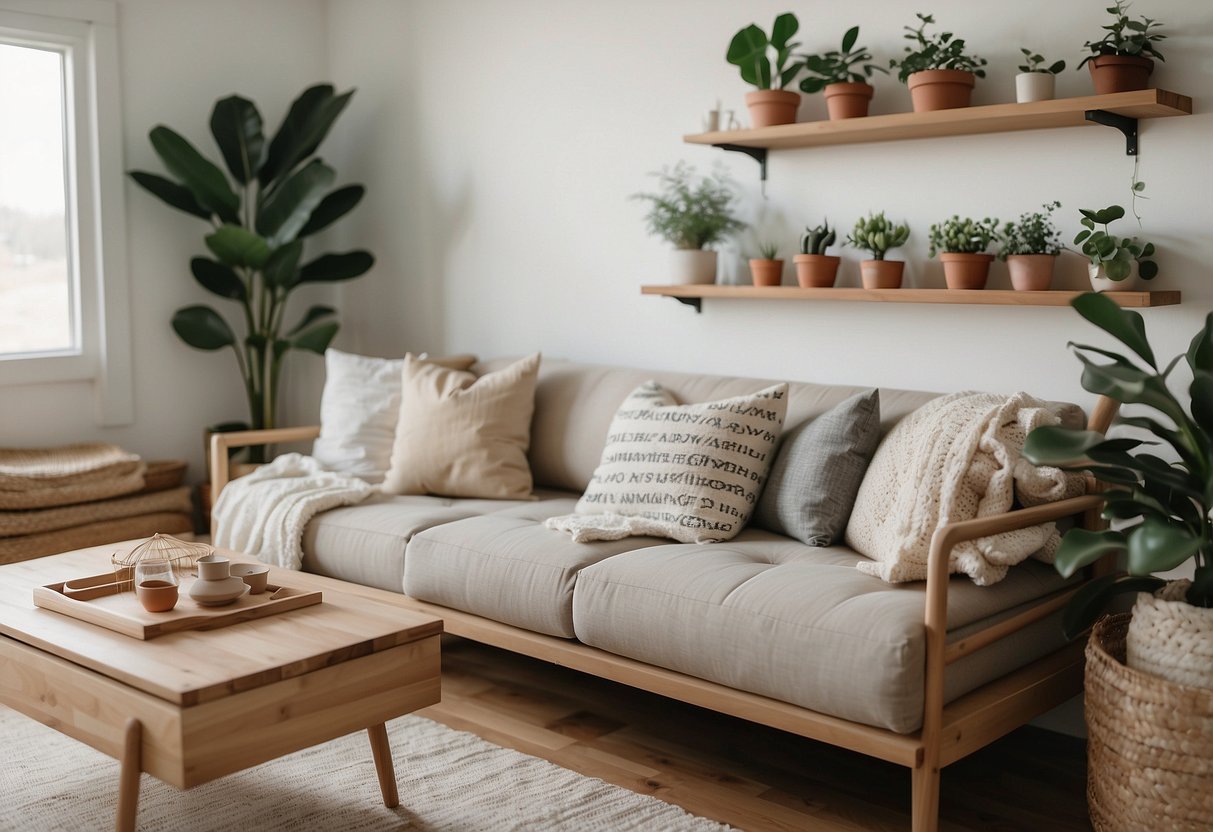
The tiny home aesthetic blends style and function, creating spaces that feel both chic and cozy. To achieve this look, choosing the right furniture is key. Pieces should be versatile, like a sofa that doubles as a bed.
Natural light plays a big role in making tiny spaces feel larger. Large windows or skylights can brighten a room. Adding mirrors helps reflect light, creating an airy feel.
Incorporating sliding barn doors is a stylish and practical choice. They save space while adding a rustic touch. This design element is especially effective in living rooms or kitchens.
For a touch of elegance, coastal style is popular in tiny homes. It emphasizes soft colors, natural materials, and a relaxed vibe. This look can be achieved through textiles and decor.
Outdoor spaces are just as important as interiors. A small patio with plants can expand living areas. Simple seating encourages enjoyment of the outdoors.
To maximize comfort, consider a rooftop deck. This added space can serve as a retreat or an entertaining area. With the right design, tiny homes can be both functional and fashionable.
Key Elements to Consider:
- Furniture: Multi-purpose pieces
- Natural Light: Large windows and skylights
- Decor: Coastal themes and soft colors
- Space-Saving Features: Sliding barn doors
- Outdoor Areas: Patios and rooftop decks
Emphasizing these elements allows for a cozy, stylish, and inviting tiny home.
Transform Your Life: The Art Of Tiny Home Aesthetics

Tiny home aesthetics blend practicality with creativity. This style focuses on functionality without sacrificing beauty. Each element must serve a purpose, making every square foot count.
Decluttering is a key part of the tiny house movement. It encourages individuals to evaluate their belongings. By downsizing, they create space for items that truly matter.
Sustainability plays a significant role in tiny home design. Many choose eco-friendly materials and energy-efficient appliances. This approach not only helps the environment but also reduces living costs.
A well-designed tiny home allows for an efficient lifestyle. Smart layout choices like multifunctional furniture maximize space. For example, a bed that folds into the wall can free up room during the day.
A budget-friendly approach is vital. Tiny homes offer an opportunity to invest in meaningful items rather than unnecessary decor. Prioritizing quality over quantity leads to a more fulfilling environment.
Personal touches enhance any tiny space. Incorporating natural elements, like plants or wooden accents, brings warmth. Lighting, both natural and artificial, creates an inviting atmosphere.
By embracing these concepts, individuals transform their homes and lives. Tiny home aesthetics offer a unique blend of efficiency, sustainability, and comfort that sets the stage for a simpler, intentional lifestyle.
Tiny Homes, Big Style: A Guide To Aesthetic Living

Tiny homes combine charm and practicality, creating stylish spaces that maximize every inch. One of the biggest challenges is often storage. Clever storage solutions help keep areas organized while maintaining aesthetics.
Top Storage Ideas for Tiny Homes:
Under-Bed Storage: Utilize the space beneath beds for boxes or drawers. This hides clutter and uses otherwise wasted space.
Wall Shelving: Floating shelves are great for displaying decor while keeping the floor clear. They add style too!
Multi-Functional Furniture: Consider pieces like ottomans or coffee tables with built-in storage. They provide functionality without sacrificing design.
DIY projects can also enhance a tiny home’s aesthetic. Simple crafts, like making decorative storage bins, can offer both style and utility.
Space-Saving Solutions to Consider:
- Nesting Tables: These can be tucked away when not in use.
- Hooks and Racks: Install them for coats or kitchen items, adding visual interest while freeing up space.
- Hidden Storage: Look for furniture that hides compartments, like benches or couches.
Prioritizing value and function does not mean giving up on style. With the right approach, tiny homes can reflect personal taste while staying organized and clutter-free.
The Beauty Of Less: Discovering Tiny Home Aesthetics

Tiny homes create a unique blend of style and function within small spaces. The aesthetic of these homes emphasizes simplicity and thoughtful design.
With limited square footage, homeowners must prioritize their needs. This often leads to a more intentional approach to aesthetics, where every item has a purpose.
Key Elements of Tiny Home Aesthetics:
- Natural Light: Large windows and skylights allow sunlight to flood in, making spaces feel larger.
- Cozy Textures: Incorporating soft textiles, such as cushions and throws, brings warmth to the design.
- Versatile Furniture: Multi-functional furniture maximizes floor space and enhances usability.
Color choices also play a significant role. Soft, neutral colors can expand the perception of space. Bright accents add personality without overwhelming the area.
Incorporating nature through plants can enhance the atmosphere. Outdoor views and greenery create a connection to the environment.
Lastly, open floor plans help eliminate clutter. This layout encourages a flow between areas, making tiny homes feel more spacious.
With careful planning, tiny home aesthetics can highlight beauty in less, creating inviting spaces that resonate with simplicity and style.
Tiny Home Aesthetic: Designing Your Perfect Small Space

Designing a tiny home requires creativity and thoughtful planning. The aesthetic should reflect personal style while making the most of limited space.
Tips for Creative Design
Prioritize Natural Light
Large windows or skylights can brighten a small space. Natural light makes areas feel more open and welcoming.Embrace Minimalism
Use a simple color palette and streamlined furniture. Keep decorations to a minimum to reduce clutter.Multi-Functional Furniture
Choose furniture that serves multiple purposes. A sofa bed or an ottoman with storage can save space.
Placement Ideas
Open Concept Layouts
An open floor plan helps create a sense of flow. This design enhances interaction in the living area.Zoning Areas
Use rugs or furniture placement to define different areas within the space. This adds structure while keeping everything accessible.
Additional Design Elements
Indoor/Outdoor Transition
Incorporate sliding doors to extend living space outdoors. This feature is great for sunny climates.Lighting Choices
Layer lighting with overhead fixtures, floor lamps, and table lamps. This adds depth and warmth to the home.
These tips can guide anyone looking to create an inviting and functional tiny space that truly feels like home.
Stylish Simplicity: The Tiny Home Aesthetic You’ll Love

The tiny home aesthetic focuses on combining style and functionality in small spaces. With thoughtful design, every element can enhance comfort while looking good.
Color Schemes
Using a neutral color palette can make a small area feel larger. Soft whites, grays, and beiges provide a calm backdrop.
Bold accents can add personality. A bright yellow pillow or a vibrant blue piece of art can provide a fun pop against neutral tones. Earthy colors like terracotta or olive green also complement the natural surroundings.
Choosing Colors
- Neutral Colors: Create a serene base.
- Vibrant Colors: Use sparingly for energy.
- Earthy Tones: Connect with nature.
Space Planning
In tiny homes, layout matters. Multi-functional furniture can save space, like a sofa bed or a table that folds down. Layout should prioritize functionality without clutter.
Textures and Materials
Combining wood, metal, and fabric can add depth. A wooden table with metal chairs creates a balanced look. Layering textures makes the space feel more inviting and cozy.
By focusing on stylish simplicity, tiny homes can truly shine, proving that small spaces can be both beautiful and functional.
From Drab To Fab: Elevating Your Tiny Home Aesthetic

Transforming a tiny home from drab to fab is all about smart choices and creativity. Here are some effective ways to elevate the aesthetic.
Choose Light Colors
- Light colors can make a small space feel larger.
- Neutrals like whites, beiges, or soft pastels work well.
Incorporate Texture
- Use a variety of textures to add depth.
- Consider textiles like woven baskets, soft rugs, and mirrored surfaces.
Optimize Natural Light
- Keep windows clear of heavy drapes.
- Use sheer curtains or blinds to let in more light.
- Furniture should be both stylish and practical.
- Look for pieces that serve multiple purposes, like a storage ottoman or a fold-out desk.
- Adding personal items can make the space feel welcoming.
- Use art, plants, or family photos to add character.
Smart Storage Solutions
- Use shelves and cabinets that blend with the wall color.
- Built-in storage helps keep the space organized and visually appealing.
By following these tips, anyone can easily elevate the look of their tiny home. Small changes can make a big impact. Embrace the challenge and enjoy creating a fab space!
Tiny Home Aesthetic Interior

Creating an aesthetic interior in a tiny home focuses on simplicity and functional design. The goal is to maximize space while maintaining style.
Key Elements of Tiny Home Interior Design:
Open Spaces: An open floor plan can make a small area feel larger. Using modular furniture allows for flexibility.
Natural Light: Large windows and skylights increase brightness. This enhances the feeling of space and connects the indoors with the outdoors.
Color Palette: Light colors can create an airy vibe. Whites and pastels often work best for walls and flooring.
Minimalism: Keeping decor to a minimum helps prevent clutter. Only essential items should be displayed.
Functional Areas:
- Kitchen:
- Compact appliances save space.
- Vertical storage options maximize food storage.
- Bathroom:
- Open shelving can keep essentials organized without feeling cramped.
- Sliding barn doors save space compared to traditional doors.
Decorative Touches:
- Use plants to add life and color.
- Wall art or mirrors can enhance visual interest and depth.
Incorporating these ideas creates a tiny home that is both functional and stylish. Each detail should reflect a chosen aesthetic while prioritizing the efficient use of space.
Tiny Home Aesthetic

The tiny home aesthetic blends functionality with charm. Many people find joy in creating a space that feels cozy yet stylish.
Key Elements of Tiny Home Design:
- Minimalism: This style focuses on simplicity. Each piece serves a purpose, allowing for a clutter-free environment.
- Natural Light: Large windows or glass doors bring in light and make spaces feel bigger. This element is crucial for tiny homes.
- Open Spaces: Avoiding bulky furniture helps maintain an open flow. This makes tiny areas feel more inviting.
Popular Styles:
- Modern Minimalist: Clean lines and neutral colors dominate. It emphasizes efficiency and sleek design.
- Farmhouse: Warm colors and rustic textures create a cozy vibe. Features like shiplap walls and vintage decor are common.
- Country Cottage: This aesthetic uses rich, inviting colors. It often incorporates floral patterns and comfortable furnishings.
Using multi-functional furniture is essential. Pieces that serve dual purposes maximize utility.
Design Tips:
- Use accent walls to add interest without overwhelming the space.
- Incorporate outdoor elements like sliding doors to merge indoor and outdoor living.
Tiny homes can be both aesthetically pleasing and practical, making them perfect for those seeking simplicity.
Vintage Tiny Home Aesthetic

A vintage tiny home aesthetic embraces charm and nostalgia. It often features exposed brick that adds warmth and character to the space. This style invites the past into the present, making the home feel inviting.
Exposed beams are another staple in vintage design. They create a rustic touch and add structural interest. These beams can be left in their natural state or painted for a fresh look.
Incorporating vintage furniture can enhance the theme. Items such as:
- Antique tables
- Retro chairs
- Handcrafted cabinets
These pieces tell a story and bring unique flair to any tiny home.
Color plays a key role too. Soft, muted tones like pastel blues, greens, and yellows often create a cozy feel. These colors pair well with wooden elements, making the space feel larger and more open.
Textures are important in vintage designs. Mixing materials like wood, metal, and fabric adds depth. For instance, a woven rug can soften hard surfaces and create a welcoming atmosphere.
Lastly, personal touches complete the look. Vintage décor items, such as old books, framed pictures, and trinkets, can make the space truly unique. Each item contributes to a narrative, adding layers to the aesthetic.
A vintage tiny home aesthetic is about blending style with comfort, creating a perfect retreat.
Tiny Home Bedroom Ideas Aesthetic

Designing a tiny home bedroom can blend style and functionality. Many choose a minimalist approach, focusing on clean lines and simple designs. This style creates a calming atmosphere.
Key Elements for a Tiny Bedroom:
- Multi-Functional Furniture: Use items like Murphy beds or loft beds. These save space and can be stylish.
- Natural Light: Positioning the bed near windows brings in light. It makes the room feel open and airy.
Storage Solutions:
- Under-Bed Drawers: These can store linens or seasonal clothes while keeping the room tidy.
- Wall Shelves: Floating shelves display decor and books without taking up floor space.
In a tiny home, every inch counts. A home office can fit seamlessly into the bedroom. A small desk can be placed against a wall or by a window, keeping the area organized.
- Light Colors: Soft shades like whites and pastels can make the space feel larger.
- Accent Decor: Use cushions or throws in bold colors for a pop without overwhelming the space.
Personal touches in a tiny bedroom enhance the aesthetic. Art, plants, and meaningful items transform a simple room into a cozy retreat.
Tiny Home Loft Bedroom Ideas Aesthetic

Creating a cozy loft bedroom in a tiny home blends style and functionality. Here are some key ideas to consider:
Maximize Space: Lofts effectively increase sleeping areas without taking up valuable floor space. They can serve as both bedrooms and storage areas.
Light Colors: Using light colors on walls and bedding can make the space feel larger and more inviting. Shades like soft whites, pastels, and neutral tones work well.
Multi-Functional Furniture: Opt for furniture that serves more than one purpose. A loft bed with an underneath desk can create a compact workspace.
Personal Touches: Incorporate decorative elements like artwork, plants, and textiles to add character. These can make the loft area feel more personalized and warm.
Natural Light: Adding windows or skylights can bring in natural light. This helps the space feel bright and airy.
Vertical Storage: Use vertical space for storage with shelves or cabinets. This keeps the area organized while looking stylish.
Cozy Bedding: Invest in quality bedding that complements the aesthetic. Soft throws and cozy pillows invite relaxation.
Designing a tiny home loft bedroom can reflect personal style while maintaining a functional living space. Emphasizing these elements will enhance comfort and beauty.
Cozy Tiny Home Aesthetic

Creating a cozy tiny home aesthetic focuses on comfort and warmth within a small space. Key elements like color palettes, furniture choices, and layout can enhance the inviting feel of a tiny home.
Color Choices
Opt for soft, warm colors such as pastels or earth tones. These shades help the space feel open yet snug. Consider using an accent wall to add a pop of color without overwhelming the room.
Furniture Selection
Compact furniture is essential. A Murphy bed is an excellent choice, allowing for a comfortable sleeping area that can be easily tucked away. This maximizes floor space and makes the tiny home feel larger. A sectional sofa can offer seating and sleeping options while adding warmth.
Use of Space
Incorporate built-in shelves and storage solutions to keep the area tidy. This effectiveness helps families stay organized, making the space more enjoyable.
Staircase Design
Choosing a staircase with a railing adds safety and style. A spiral staircase can save space while providing a chic look.
Final Touches
Accessorize with soft textiles like blankets and cushions. Choose lighting that creates a warm glow, such as string lights or lamps with soft bulbs.
With these ideas, the cozy aesthetic of a tiny home can be achieved, ensuring it feels like a personal sanctuary.
French Country Tiny Home Aesthetic

The French country tiny home aesthetic blends rustic charm with cozy elegance. It emphasizes warmth, simplicity, and natural materials. This style is perfect for those wanting a peaceful retreat.
Key elements include:
- Natural Materials: Use wood, stone, and clay to create a warm atmosphere. Exposed beams and wooden floors add character.
- Color Palette: Soft, muted colors like cream, pale blue, and sage green evoke the countryside. These shades create a calm and inviting space.
- Decorative Accents: Incorporate vintage items and handmade crafts. Shutters and floral window boxes enhance the rustic vibe.
A popular feature in this style is the farmhouse kitchen. It combines functionality with traditional design. A farmhouse sink and open shelving keep it practical and stylish.
Furniture should be comfortable and inviting. Opt for pieces with simple lines, such as a farm-style dining table. Mixing old and new creates a unique and personal touch.
Light plays a vital role. Large windows allow natural sunlight to fill the space. This brightens the room and gives it an open feel.
In a French country tiny home, every detail matters. It is about creating a serene environment that feels like a retreat from the world. With thoughtful design, any small space can reflect this charming style.





